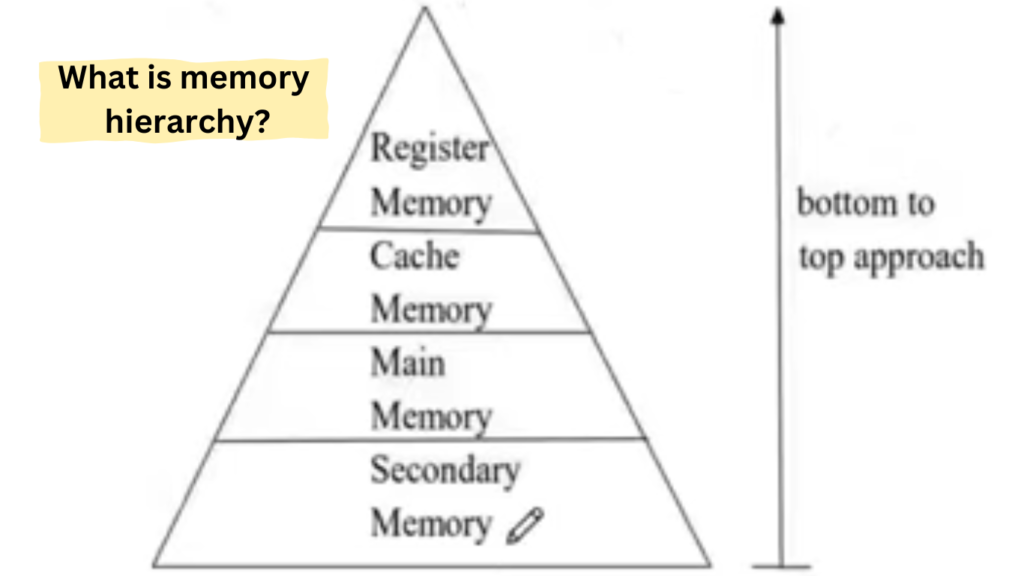Hey! Do you want to know ” What is memory hierarchy, Explain with the help of a diagram, Why is hierarchy created in a computer system, The Different Levels of Memory Hierarchy and Their Functions, Understanding the Role of Cache Memory in Memory Hierarchy, How the Memory Hierarchy Impacts Computing Performance, The Future of Memory Hierarchy in Computing“, then follow this article.

As a computer science professional, I have come across the term “memory hierarchy” countless times. It is an essential aspect of modern computing, and understanding its principles is crucial for anyone who wants to delve deeper into the world of computer architecture.
In this article, I will explain what memory hierarchy is, why it is important, the different levels of memory hierarchy and their functions, the role of cache memory, how the memory hierarchy impacts computing performance, and the future of memory hierarchy in computing.
What is Memory Hierarchy and Why is it Important?
Memory hierarchy refers to the organization of computer memory into different levels, each with varying performance characteristics. The primary objective of memory hierarchy is to improve the overall performance of a computer system by providing faster access to frequently used data while reducing the cost of memory.
The concept of memory hierarchy is based on the principle of locality, which states that a program is likely to access a small portion of its address space repeatedly.
Memory hierarchy is critical because it helps to bridge the gap between the speed of the processor and the speed of the memory.
Without memory hierarchy, the processor would have to wait for data to be fetched from memory, which would lead to significant performance bottlenecks.
Memory hierarchy allows the processor to access the most frequently used data much faster, reducing the amount of time it has to wait for data to be fetched.
The Different Levels of Memory Hierarchy and Their Functions
Memory hierarchy consists of several levels, each with its own unique characteristics and purposes. The levels of memory hierarchy include:
Level 1 Cache (L1)
Level 1 cache, or L1 cache, is a small, high-speed memory that is integrated directly into the processor. The primary function of L1 cache is to store frequently used data and instructions, allowing the processor to access them quickly without having to access slower memory.
L1 cache is usually the fastest and most expensive level of memory in the hierarchy.
Level 2 Cache (L2)
Level 2 cache, or L2 cache, is a larger, but slower memory that is also located on the processor chip. Its primary function is to store data and instructions that are less frequently used than those in L1 cache. L2 cache is slower than L1 cache but is still faster than main memory.
Main Memory (RAM)
Main memory, also known as Random Access Memory (RAM), is a large, high-capacity memory that stores data and instructions that are currently in use by the processor.
Main memory is much slower than L1 and L2 cache but is still much faster than secondary storage devices such as hard drives.
Secondary Storage
Secondary storage refers to permanent storage devices such as hard drives and solid-state drives (SSD). These devices have much larger storage capacities than main memory but are much slower.
Secondary storage is used to store data and instructions that are not currently in use by the processor.
Understanding the Role of Cache Memory in Memory Hierarchy
Cache memory plays a crucial role in memory hierarchy. Its primary function is to reduce the amount of time the processor has to wait for data to be fetched from main memory.
When the processor needs to fetch data, it first checks the L1 cache. If the data is not found in L1 cache, it checks L2 cache. If the data is not found in L2 cache, it is fetched from main memory.
Cache memory is designed to take advantage of the principle of locality. When the processor accesses a certain memory location, it is likely to access nearby memory locations soon after.
Cache memory stores a copy of nearby memory locations so that when the processor accesses them, they are quickly available in the cache memory, reducing the amount of time the processor has to wait for the data to be fetched from main memory.
How the Memory Hierarchy Impacts Computing Performance
The memory hierarchy has a significant impact on computing performance. The use of cache memory reduces the amount of time the processor has to wait for data, which results in faster processing times.
The size and speed of the cache memory also play a crucial role. A larger cache memory means that more data can be stored, reducing the number of times the processor has to access slower memory.
A faster cache memory means that data can be accessed more quickly, reducing the amount of time the processor has to wait.
The memory hierarchy also affects the overall cost of the computer system. Faster memory is more expensive than slower memory, and larger memory is more expensive than smaller memory.
By utilizing the memory hierarchy, computer manufacturers can provide a balance between cost and performance, ensuring that computer systems are affordable while still providing adequate performance.
A Diagram of the Memory Hierarchy and Its Components

The Future of Memory Hierarchy in Computing
The future of memory hierarchy in computing is closely tied to the development of new technologies. As processors become faster and more powerful, the demand for faster memory will increase.
Researchers are currently exploring new technologies such as 3D-stacked memory and phase-change memory that could provide faster and more efficient memory solutions.
Another trend in memory hierarchy is the use of non-volatile memory such as SSDs as a higher-level cache. This approach has the potential to significantly improve performance while reducing power consumption.
How Different Types of Memory are Used in Memory Hierarchy
Different types of memory are used in memory hierarchy to provide a balance between cost and performance. L1 cache is typically made of SRAM, which is faster and more expensive than DRAM, which is used in L2 cache and main memory.
Secondary storage devices such as hard drives and SSDs are typically made of non-volatile memory such as NAND flash memory.
Conclusion: The Significance of Memory Hierarchy in Modern Computing
In conclusion, memory hierarchy is an essential aspect of modern computing. By organizing memory into different levels, computer manufacturers can provide a balance between cost and performance, ensuring that computer systems are affordable while still providing adequate performance.
Cache memory plays a crucial role in memory hierarchy, allowing the processor to access frequently used data quickly and reducing the amount of time it has to wait for data to be fetched from main memory.
The future of memory hierarchy is closely tied to the development of new memory technologies, which could provide faster and more efficient memory solutions.
As a computer science professional, I believe that understanding the principles of memory hierarchy is crucial for anyone who wants to delve deeper into the world of computer architecture.
So that’s all about What is memory hierarchy, Explain with the help of a diagram, Why is hierarchy created in a computer system, The Different Levels of Memory Hierarchy and Their Functions, Understanding the Role of Cache Memory in Memory Hierarchy, How the Memory Hierarchy Impacts Computing Performance, The Future of Memory Hierarchy in Computing.

